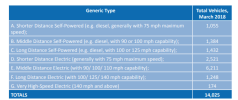Frank Scully
Member
(Unsure if this should be filed under International instead...)
Why is only 38% of the UK rail network electrified? Looking at the stats here European Rail Electrification Stats, we fall well behind all our peer countries (we're even behind places like Turkey and Serbia fgs). It's not as if our peers decided to spend on electric rail instead of motorways either as the UK motorway network is also really cadaverous compared to our peers (and I know some German roads classified as autobahns are just dual carriageways), but our m'way route mileage also falls well behind Germany, France and Spain.
So what have we been spending all our infra money on over the last century? Is the UK terrible at project management? Is there endemic corruption? Where has all the money gone? On most measures of infra route length, the UK doesn't even hit the median.
Why is only 38% of the UK rail network electrified? Looking at the stats here European Rail Electrification Stats, we fall well behind all our peer countries (we're even behind places like Turkey and Serbia fgs). It's not as if our peers decided to spend on electric rail instead of motorways either as the UK motorway network is also really cadaverous compared to our peers (and I know some German roads classified as autobahns are just dual carriageways), but our m'way route mileage also falls well behind Germany, France and Spain.
So what have we been spending all our infra money on over the last century? Is the UK terrible at project management? Is there endemic corruption? Where has all the money gone? On most measures of infra route length, the UK doesn't even hit the median.


